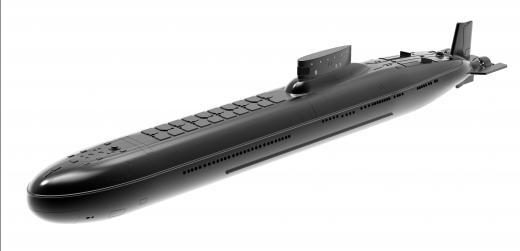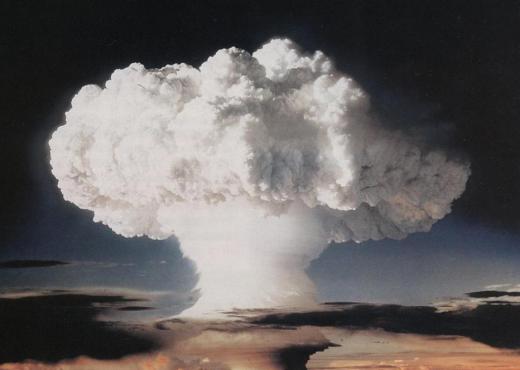What are Some Different Types of Nuclear Weapons?
 Michael Anissimov
Michael Anissimov
There are two main categories of nuclear weapons, classified by their mechanism of operation: fission bombs, which break apart heavy atomic nuclei to release energy, and fusion bombs, which fuse light nuclei. Fusion bombs tend to be much more powerful. Within these nuclear weapon categories, there are slight variants: for example, a salted bomb is surrounded by a layer of material that can become highly radioactive with neutron bombardment, and fission-boosted weapons are nuclear weapons that, despite being based on fission, exploit fusion reactions to boost their yield. Neutron bombs, or enhanced radiation weapons, are fusion weapons designed to emit intense neutron radiation, killing all life within a certain area but doing less damage to buildings.
Most nuclear weapon variants are designed for the purpose of having a spectrum of available yields and sizes for different applications. The most fearsome nuclear weapon of all time was the Tsar Bomba, a Soviet fusion bomb with the explosive force of 50 megatons of TNT. At first it was designed to have a yield of 100 megatons, but this was scaled down due to fallout concerns. In contrast, the smallest nuclear weapons, like some tested for Operation Plumbbob at the Nevada Test Site, may have a yield as low as a mere ton of TNT, or less. The smallest nuclear weapon mass-produced for deployment was the Davy Crockett warhead, designed for infantry launch from small redeployable mortars. It was deployed in Germany to guard against a Soviet invasion of Europe.

The earliest nuclear weapon designs were modeled after small guns, which shoot a hemisphere of highly-enriched uranium into another hemisphere of the same, kickstarting a nuclear reaction and the ensuing release of heat and light in large quantities. More modern designs use implosion assemblies, where spheres of segmented uranium are surrounded by chemical explosives that all detonate simultaneously, concentrating the uranium in the center and starting a chain reaction.

It is possible to make nuclear weapons that are quite small, on the order of size of a toaster. Because extremely large nuclear weapons cause collateral damage in the form of fallout, and have reduced yields because more of the uranium is blown apart without fissioning, the military favors nuclear weapons in the small-to-medium range. More focus in put on the method of delivery. Until they were decommissioned in 2005, the most fearsome delivery method for nuclear weapons worldwide was the American LGM-118A Peacekeeper missile. It contained 10 reentry vehicles, each with a nuclear warhead 25 times more powerful than the bomb that incinerated Hiroshima. One of these could dole out destruction across a very wide swath of land.
AS FEATURED ON:
AS FEATURED ON:














Discussion Comments
@amphibious54 -- As far as nuclear weapons being only for genocide, we already had the power to destroy cities and the people who lived by that point. See the firebombing raids on Japan that started in 45, much less the number of cities we utterly leveled with conventional high explosives before hand. The former of which actually killed more people then both 'atomic bomb' attacks combined. All nuclear weapons did was make this process more efficient as what previously took entire formations of bombers to do could now be done by a single bomber or missile reentry vehicle.
The threat nuclear weapons pose to humanity is severe, and the doomsday clock tracks this threat to humanity. The bulletin of the Atomic scientists created the clock as a means to track the threat of nuclear weapons, but currently the clock tracks climate and bioengineered threats to humanity as well. The clock currently resides at six minutes to midnight (the theoretical time of Doomsday), but has been as close as two minutes and as far away as 17 minutes to midnight.
It is crazy to think that one of the most scientifically advanced discoveries of our time also has the power to bring our species to extinction. As the article stated, a small to medium nuclear warhead is 25 times more powerful than the bomb that fell on Hiroshima. Almost 200,000 people died in the wake of Hiroshima, almost all of whom were civilians.
This highlights the worst attributes of the bomb; it is only used for acts of genocide. I say this since a nuke indiscriminately kills everyone in a concentrated area usually made up of one cultural or ethnic group. Scientist did not design nuclear bombs to settle military disputes scientists designed the bomb to wipe out entire populations.
There are also dirty nuclear devices that rely on the quantum tunneling effect of atomic particles with large nuclei. Many of the elements of the sixth seventh and eight period of the periodic table are highly radioactive, having half-lives of about 100 years or less. These elements can emit alpha particles that are very damaging if humans inhale or ingest them.
A dirty bomb would use these elements in powder form inside of a bomb. The blast may not be the deadliest part of the bomb rather the vaporization of radioactive material would do the most damage. This would create large amounts of radioactive dust within the vicinity of the blast, and could render the sight a radioactive hazard for years.
Post your comments